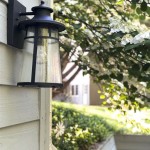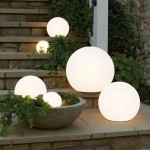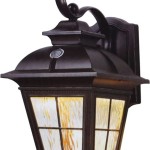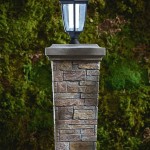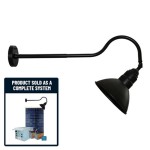How to Set an Outdoor Motion Sensor Light Switch
Outdoor motion sensor light switches are a valuable addition to any home, providing security and convenience by automatically illuminating your property when movement is detected. Setting up these switches can seem daunting, but the process is relatively straightforward. This article will guide you through the steps, making the installation process easy and understandable.
Step 1: Choosing the Right Location
The placement of your motion sensor light switch is crucial for optimal functionality. Consider the following factors when selecting a location:
-
Target area:
Determine the specific area you want to illuminate. This could be a driveway, walkway, porch, or any other outdoor space you wish to monitor. -
Power source:
Ensure there is a nearby electrical outlet or junction box to connect the switch. -
Obstructions:
Avoid placing the switch behind trees, shrubs, or other objects that might block its motion detection range. -
Visibility:
Position the switch where it is visible and accessible for potential adjustments.
Once you have chosen the ideal spot, mark the area with a pencil or tape, ensuring the switch will be mounted at a suitable height. For optimal visibility, the sensor should be positioned approximately 8 feet above ground level.
Step 2: Installing the Motion Sensor Switch
With the location determined, follow these steps to install the motion sensor light switch:
-
Turn off the power:
Locate the circuit breaker controlling the outdoor lights and turn it off. This ensures your safety during the installation process. -
Mount the switch:
Attach the mounting plate to the wall using screws or anchors depending on the wall material. Ensure a secure and level installation. -
Connect the wires:
Carefully connect the wires from the motion sensor switch to the existing wiring in the junction box or outlet. Most motion sensor switches have three wires:-
Neutral wire (white):
This wire connects to the neutral wire in the junction box. -
Hot wire (black):
This wire connects to the hot wire in the junction box. -
Ground wire (green or bare copper):
This wire connects to the ground wire in the junction box.
-
-
Secure the connections:
Ensure all wire connections are secure and properly insulated with wire nuts. Refer to the manufacturer's instructions for specific wiring diagrams. -
Test the switch:
Turn the power back on at the circuit breaker and test the motion sensor. Walk in front of the switch and observe if the lights turn on as expected.
Step 3: Adjusting the Motion Sensor Settings
Most motion sensor light switches offer adjustable settings to customize their operation. These settings may include:
-
Sensitivity:
Adjusts the sensor's sensitivity to movement. Higher sensitivity detects smaller movements, while lower sensitivity requires larger movements to trigger the light. -
Time delay:
Determines the duration for which the lights remain on after movement is detected. You can set the time delay from a few seconds to several minutes. -
Light level:
Some motion sensor switches have a light level setting, allowing the lights to turn on only when ambient light falls below a certain threshold. -
Test mode:
This setting allows you to test the motion sensor without triggering the light, making adjustments easier.
Experiment with different settings to optimize the operation of your motion sensor for your specific needs and environment.

Understanding Motion Lighting

How To Adjust Your Sensor Light Metro Electrical 24 Hour Electricians

How To Wire Occupancy Sensor And Motion Detectors

How To Wire Motion Sensor Occupancy Sensors

How To Install Security Lights Diy Family Handyman

How To Install A Motion Sensor Light Four Generations One Roof

How To Install An Outdoor Motion Sensor Light With Pictures

How To Wire Motion Sensor Occupancy Sensors

Motion Sensor Lights Tips To Reset Detector

How To Reset Outdoor Motion Sensor Lights Electronicshub
